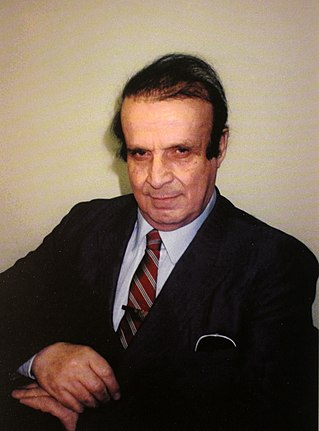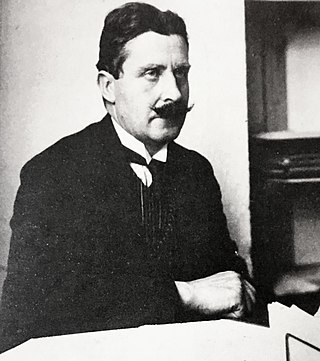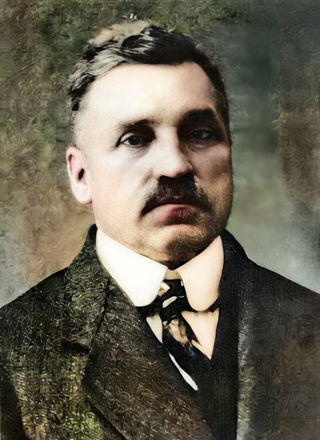
Ottoman Armenian casualties refers to the number of deaths of Ottoman Armenians between 1914 and 1923, during which the Armenian genocide occurred. Most estimates of related Armenian deaths between 1915 and 1918 range from 600,000 to 1.2 million.

Vahakn Norair Dadrian was an Armenian-American sociologist and historian, born in Turkey, professor of sociology, historian, and an expert on the Armenian genocide.

Halide Edib Adıvar was a Turkish novelist, teacher, and a nationalist and feminist intellectual. She was best known for her novels criticizing the low social status of Turkish women and what she saw from her observation as the lack of interest of most women in changing their situation. She was a Pan-Turkist and several of her novels advocated for the Turanism movement.

Halil Kut, also known as Halil Pasha, was an Ottoman military commander and politician. He served in the Ottoman Army during World War I, notably taking part in the military campaigns against Russia in the Caucasus and the British in Mesopotamia.

Bahaeddin Shakir or Bahaddin Şakir was a physician, Turkish nationalist politician, and one of the architects of the Armenian genocide. Though he was not a minister or deputy in the government, he held powerful sway in the Central Committee of the Committee of Union and Progress and was the director of the Şûrâ-yı Ümmet, a magazine that supported the party. He was one of the three important names of the "Doctors Group" in the CUP ; He was a part of the pan-Turkist/Turanist wing of Union and Progress.
The Malta exiles were the purges of Ottoman intellectuals by the Allied forces. The exile to Malta occurred between March 1919 and October 1920 of politicians, high ranking soldiers (mainly), administrators and intellectuals of the Ottoman Empire after the armistice of Mudros during the Occupation of Istanbul by the Allied forces. The Malta exiles became inmates in a British prison where various Committee of Union and Progress (CUP) officials were held in the hopes that trials will be held at the Malta Tribunals at a future date.

The Istanbul trials of 1919–1920 were courts-martial of the Ottoman Empire that occurred soon after the Armistice of Mudros, in the aftermath of World War I.

Wehib Pasha also known as Vehip Pasha, Mehmed Wehib Pasha, Mehmet Vehip Pasha, was a general in the Ottoman Army. He fought in the Balkan Wars and in several theatres of World War I. In his later years, Vehib Pasha volunteered to serve as a military advisor to the Ethiopian Army against Fascist Italy during the Second Italo-Ethiopian War. He served as the chief of staff to Nasibu Zeamanuel, the Ethiopian Commander-in-Chief on the southern front.

Nuri Killigil, also known as Nuri Pasha (1889–1949) was an Ottoman general in the Ottoman Army. He was the half-brother of Ottoman Minister of War, Enver Pasha.
After World War I, the effort to prosecute Ottoman war criminals was taken up by the Paris Peace Conference (1919) and ultimately included in the Treaty of Sèvres (1920) with the Ottoman Empire. The Ottoman government organized a series of courts martial in 1919–1920 to prosecute war criminals, but these failed on account of political pressure. The main effort by the Allied administration that occupied Constantinople fell short of establishing an international tribunal in Malta to try the so-called Malta exiles, Ottoman war criminals held as POWs by the British forces in Malta. In the end, no tribunals were held in Malta.

The Memoirs of Naim Bey: Turkish Official Documents Relating to the Deportation and the Massacres of Armenians, containing the Talat Pasha telegrams, is a book published by historian and journalist Aram Andonian in 1919. Originally redacted in Armenian, it was popularized worldwide through the English edition published by Hodder & Stoughton of London. It includes several documents (telegrams) that constitute evidence that the Armenian genocide was formally implemented as Ottoman Empire policy.
Edward J. Erickson is a retired regular U.S. Army officer at the Marine Corps University who has written widely on the Ottoman Army during World War I. He is an associate of International Research Associates, Seattle, Washington and as of July 2016 was also listed as an advisory board member of the Ankara-based, Turkish government aligned think-tank, Avrasya Incelemeleri Merkezi (AVIM), which goes by the English name Center for Eurasian Studies.

Selanikli Mehmed Nâzım Bey also known as Doktor Nazım was a Turkish physician, politician, and revolutionary. Nazım Bey was a founding member of the Committee of Union and Progress, and served on its central committee for over ten years. He played a significant role in the Armenian genocide and the expulsion of Greeks in Western Anatolia. He was convicted for allegedly conspiring to assassinate Mustafa Kemal Atatürk in İzmir and was hanged in Ankara on 26 August 1926. He also served as the chairman of the Turkish sports club Fenerbahçe S.K. between 1916 and 1918.

Cemal Azmi, also spelled Jemal Azmi, was an Ottoman politician and governor of the Trebizond Vilayet (province) during World War I and the final years of the Ottoman Empire. He was one of the perpetrators of the Armenian genocide and was mainly responsible for the liquidation of Armenians in Trebizond Vilayet. He was known as the "butcher of Trebizond".
Oscar S. Heizer was an American diplomat who served in various posts as Consul General in the Ottoman Empire. Heizer, who was the Consul General in Trebizond during World War I, witnessed the Armenian genocide and often risked his own life to save the lives of Armenians.

During the Armenian genocide, which occurred in the Ottoman Empire under the leadership of the CUP, Armenian women in the Ottoman Empire were targets of a systematic campaign of genocidal rape, and other acts of violence against women described by scholars as "instruments of genocide" including kidnapping, forced prostitution, sexual mutilation and forced marriage into the perpetrator group.

The İzmit massacres were atrocities committed in the region of İzmit, Turkey, during the Greco-Turkish War (1919–1922) which took place during the Greek genocide. An Inter-Allied Commission of Enquiry that investigated the incidents, submitted a report, on 1 June 1921, about the events.

Hafız Mehmet was a Turkish politician and the Minister of Justice for the Republic of Turkey. While serving as a deputy in Trabzon, he was a witness to the Armenian genocide. His testimony of the event is considered by genocide scholar Vahakn Dadrian as one of the "rarest corroborations of the fact of the complicity of governmental officials in the organization of the mass murder of Armenians". He was sentenced to death after the Izmir trials of 1926, charged with attempting to assassinate Mustafa Kemal Atatürk.
Bibliography of the Armenian genocide is a list of books about the Armenian genocide:

Open Wounds: Armenians, Turks and a Century of Genocide is a 2015 book by Vicken Cheterian and published by Hurst that aims to be a "political history of the genocide since [1915] and the consequences of denialism". The book was praised for its comprehensiveness and accessibility to a wide audience.















